Explore The Great Wonders of Luxor Temple
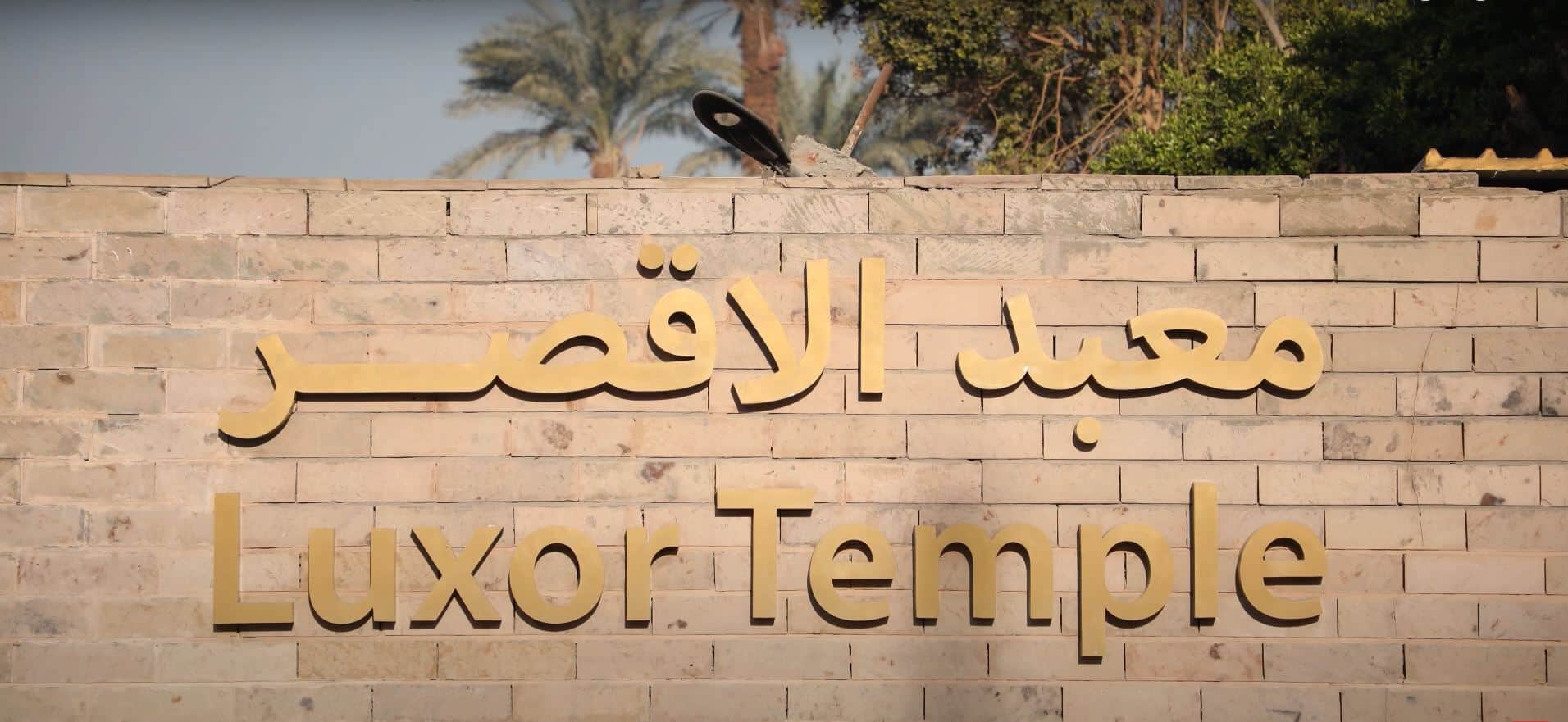
Updated On: February 22, 2024 by Ahmed Samir
The enchanting temple that will tell you lovely stories about Ancient Egypt, Luxor Temple, in the city of Luxor, is a must-visit attraction, no matter if you are a history buff or simply looking for fun. It’s a great source of inspiration.
Step into a world of ancient wonders and unravel the enigmatic secrets of Luxor Temple, one of Egypt’s most treasured historical sites. Luxor Temple, or “ipet resyt” in the Pharaonic Egyptian language, an architectural marvel of ancient Egypt, is nestled along the River Nile east bank in the modern city of Luxor.
As you wander through its walls and chambers, you’ll be taken back in time to when Thebes, now Luxor, was the thriving epicentre of a powerful civilisation. The sprawling temple complex features various distinct sections, such as the Court of Ramesses II, the Colonnade of Amenhotep III, and the Sanctuary of Amun.
Throughout its long history, Luxor Temple has withstood the passage of time, bearing witness to Roman, Christian, and Islamic influences, as exemplified by the presence of a Roman fresco, a Coptic church, and the 13th-century Mosque of Abu Haggag.
So, get ready to experience a once-in-a-lifetime adventure in the 10 sections of the temple that will leave you spellbound and inspired:
1. Avenue of the Sphinxes
The Avenue of Sphinxes or the Rams Road is a long processional avenue used to connect Luxor Temple to the nearby Karnak Temple. Spanning approximately 3 kilometres, this impressive path was lined with human-headed sphinx statues, symbolising the protective power of the pharaohs.
Initially constructed by Amenhotep III, the avenue was expanded and restored by Nectanebo I during the 30th Dynasty. In November 2021, Egypt celebrated the grand opening of the avenue allowing visitors to experience a glimpse of its ancient splendour as they approach the temple.
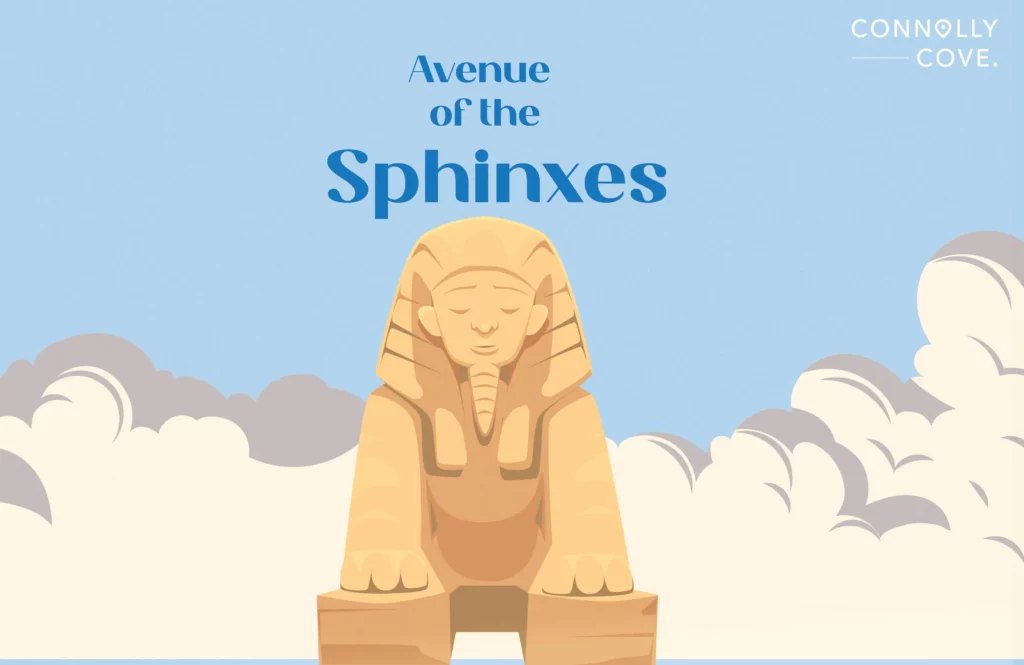
2. First Pylon
The First Pylon serves as the monumental entrance to Luxor Temple, adorned with intricate carvings and reliefs. Constructed by Ramesses II, the pylon features scenes of the pharaoh triumphing over his enemies in battle.
These inscriptions were designed to emphasise the strength and divine protection of the ruler. The sight of colossal, seated statues of Ramesses II and a remaining obelisk stand as awe-inspiring sentinels welcoming visitors into the temple complex on either side of the entrance.
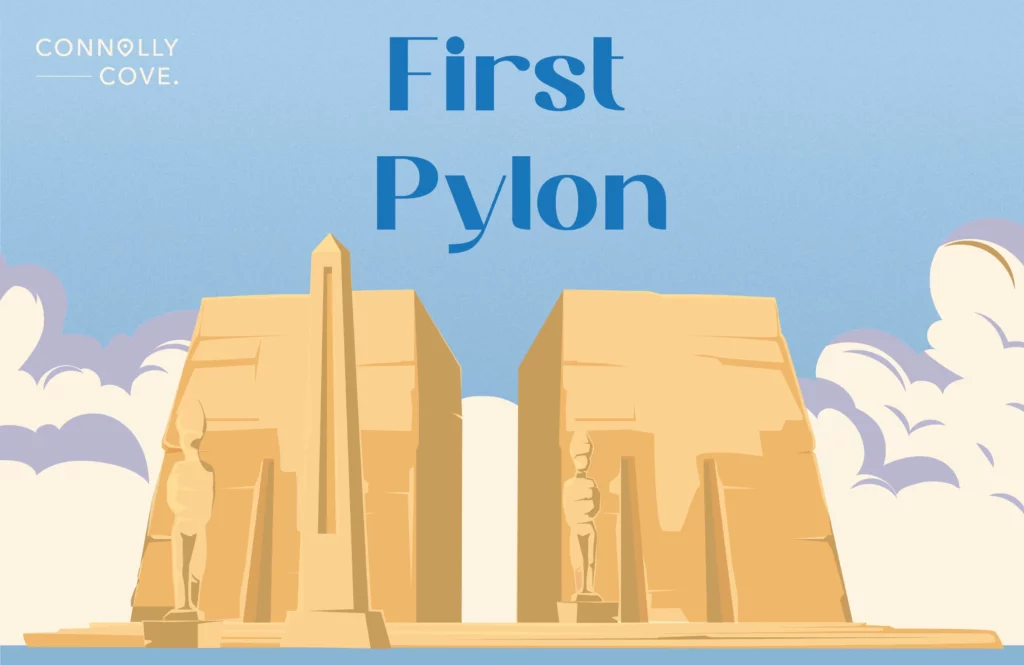
3. Roman Camp
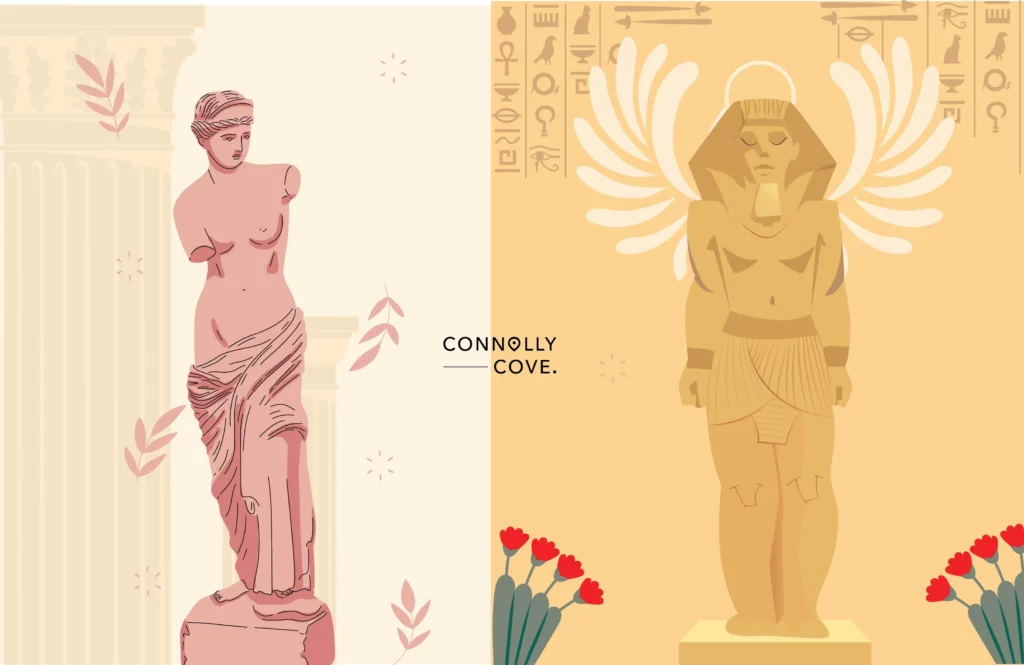
During the Roman era, Luxor Temple – Luxor – Egypt was repurposed as a military camp, exhibiting the site’s strategic importance throughout history. On one of the temple walls, you can see remnants of a Roman fresco demonstrating the soldiers’ daily lives there.
The Roman Camp also highlights the cultural interchange between Egypt and Rome during this period, as the Roman Empire adopted and adapted Egyptian motifs and architectural styles.
4. Abu Haggag Mosque

The Mosque of Abu Haggag presents a unique blend of ancient and Islamic eras that you will appreciate as you explore the temple. Built-in the 13th century, the mosque sits atop the ruins of Luxor Temple, exemplifying the site’s religious significance across time.
It was built before the unearthing of the temple, dedicated originally to Sheikh Yusuf Abu Haggag, a revered local Sufi leader. Its presence is a testament to the Islamic influence in Egypt and the enduring spiritual importance of the temple.
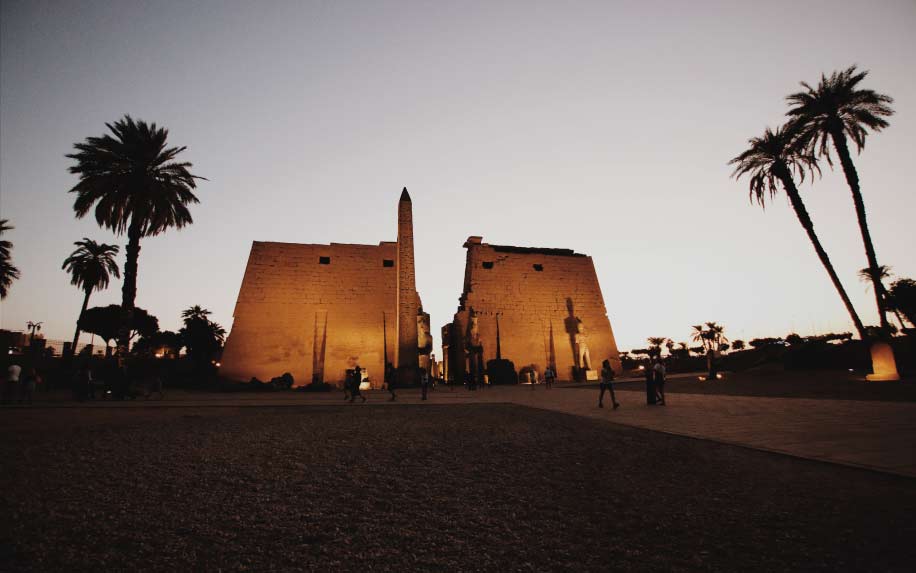
5. Court of Ramses II
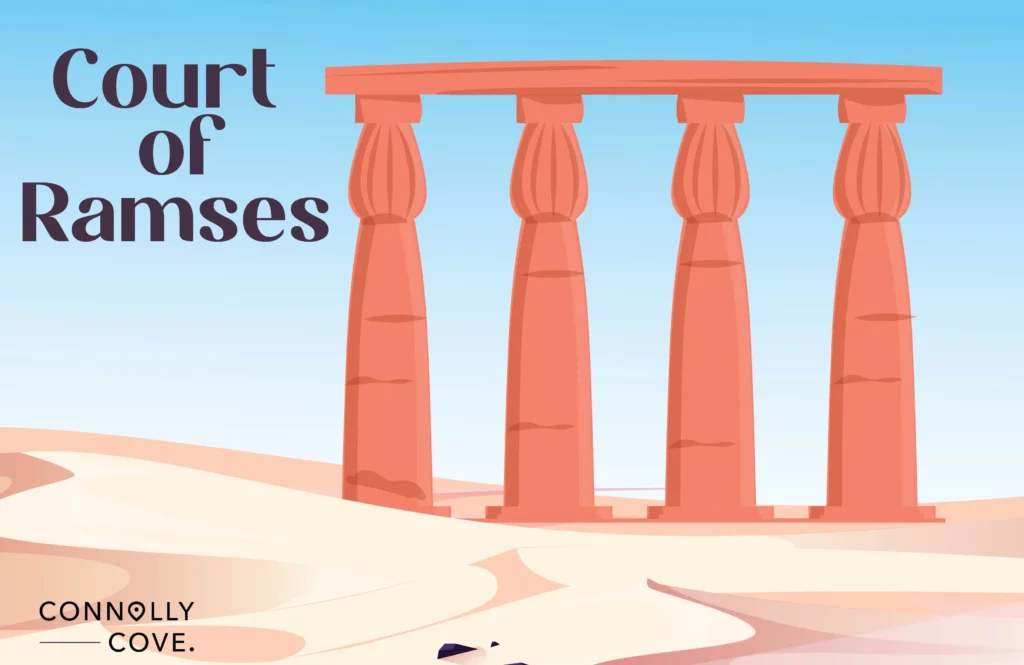
The Court of Ramses II is a vast, open space surrounded by a double row of columns adorned with papyrus capitals. This area features various statues and reliefs depicting Ramses II alongside the gods Amun, Mut, and Khonsu.
The court served as a gathering place for religious ceremonies. It was designed to showcase the pharaoh’s close relationship with the gods. The intricate carvings and imposing columns make this court an architectural masterpiece.
6. Court of Amenhotep III
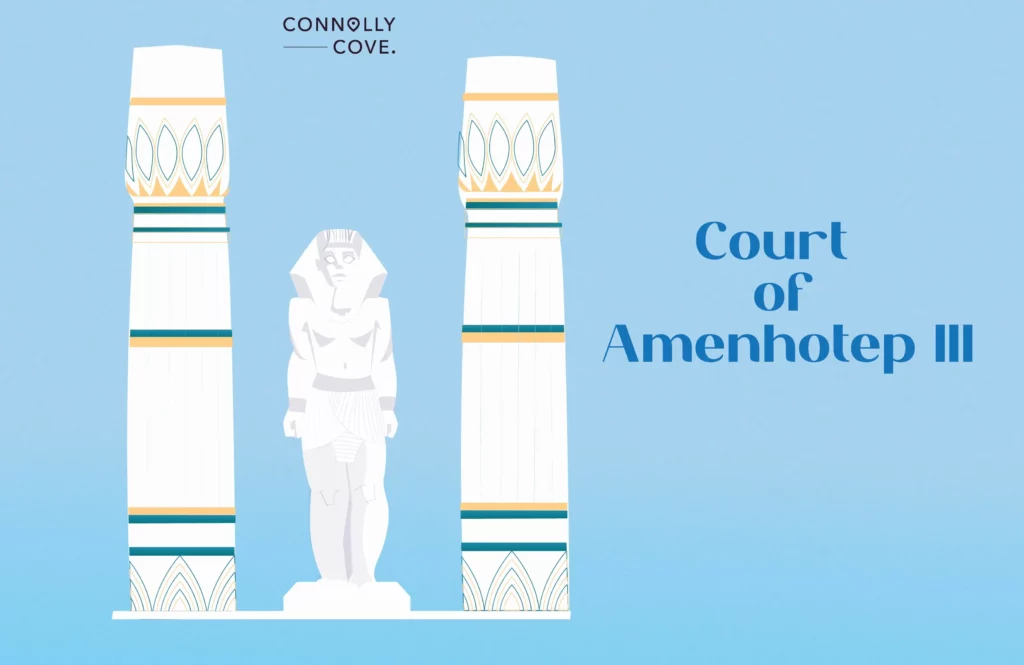
The Court of Amenhotep III is a stunning peristyle hall that follows the Court of Ramses II. Lined with graceful columns featuring open papyrus capitals, the court was initially built by Amenhotep III and later incorporated into the temple by Ramses II.
The reliefs on the walls depict various religious scenes, including the Opet Festival procession and rituals honouring the gods. This court highlights the artistic prowess and devotion of the pharaohs to their religious beliefs.
7. Chapel of Mut
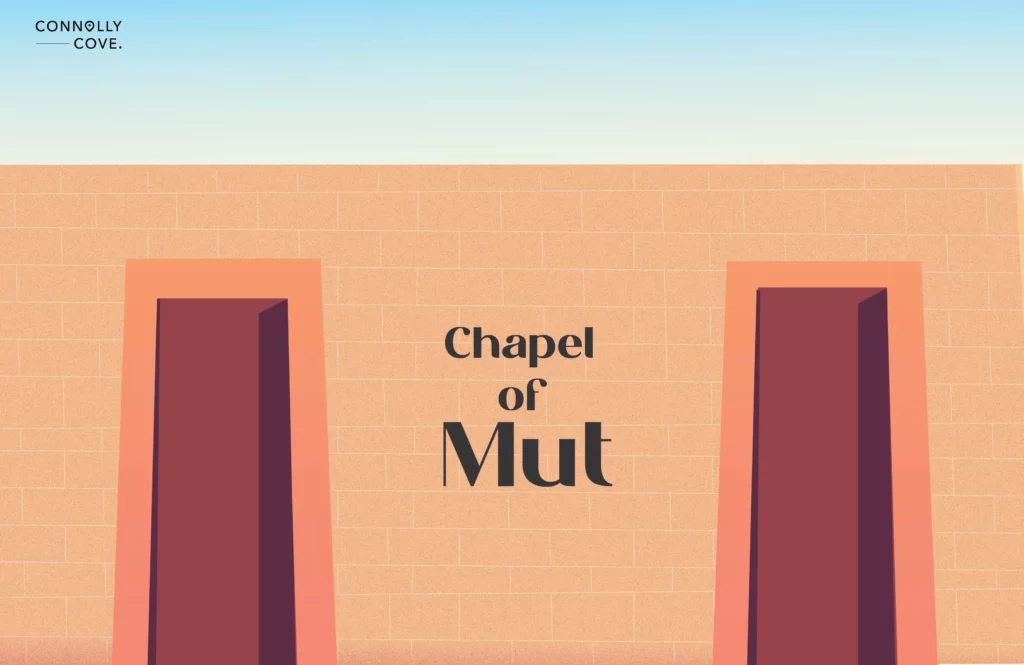
The Chapel of Mut, one of the three sanctuaries dedicated to the Theban Triad, is devoted to the goddess Mut, the wife of Amun. The chapel features a sacred barque, a small ceremonial boat, where a statue of the goddess would be placed during religious ceremonies. The walls are adorned with reliefs of the pharaoh presenting offerings to Mut, emphasising her importance in the Theban pantheon.
8. The Chapel of Khonsu
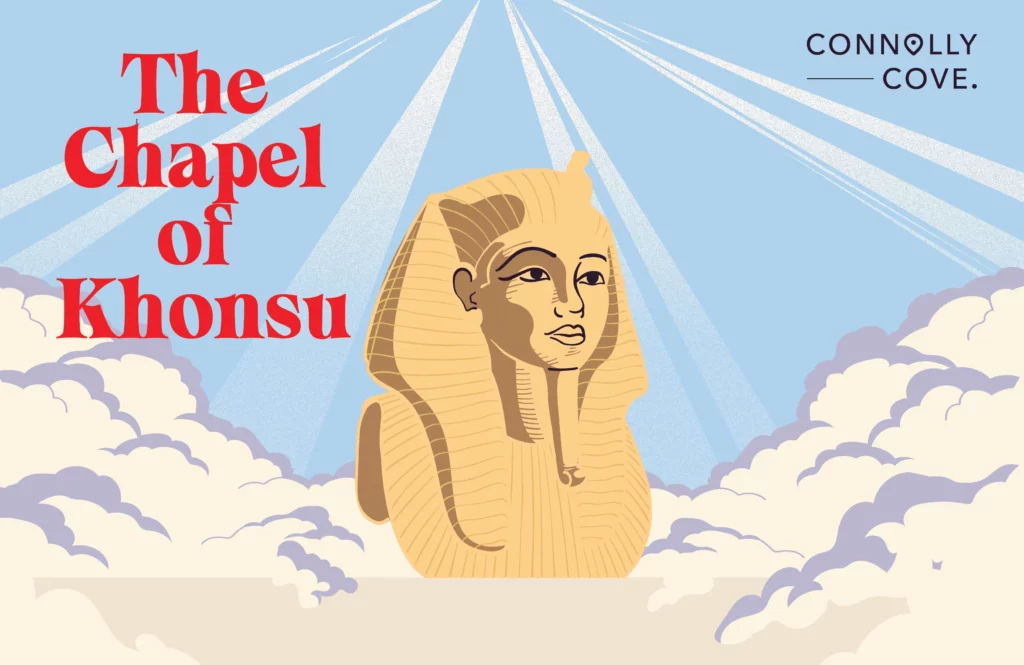
The chapel, located within the Luxor Temple complex, is a sacred space dedicated to the moon god Khonsu, who was revered as the son of Amun and Mut in the Theban Triad. The chapel features stunning reliefs depicting the pharaoh offering gifts and performing rituals honouring Khonsu.
These meticulous carvings highlight the significance of Khonsu in ancient Egyptian religious practices and his important role in the divine pantheon. As visitors explore the Chapel of Khonsu, they can appreciate the craftsmanship and spiritual devotion that characterised the art and architecture of ancient Egypt.
9. Chapel of Amun
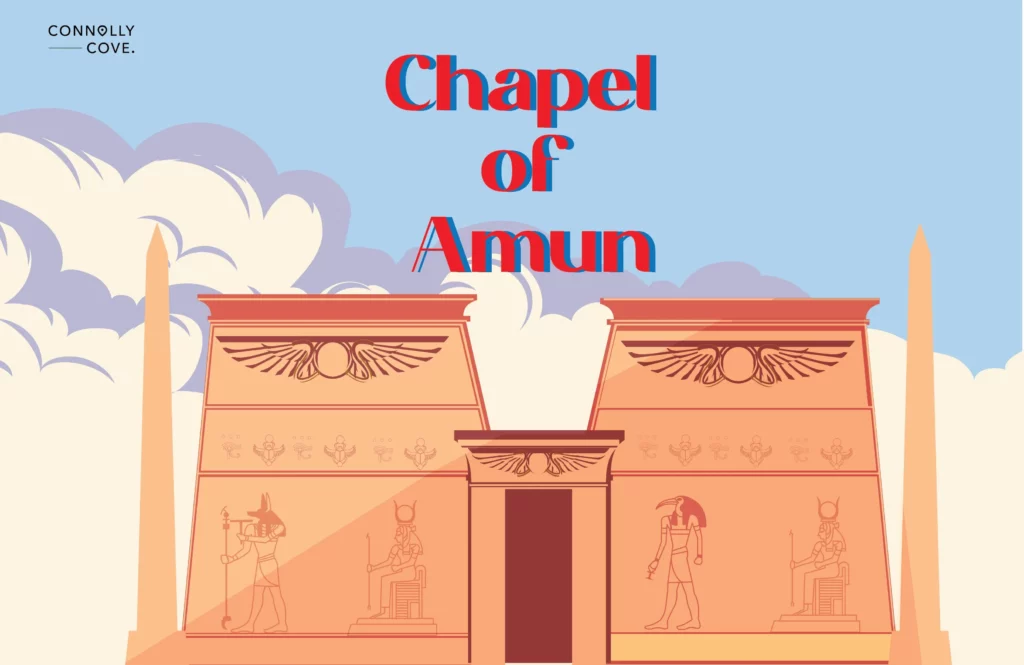
The Chapel of Amun, the central sanctuary within Luxor Temple, is dedicated to the king of the gods in the New Kingdom, Amun. The most important religious rituals took place in this sacred chamber, adorned with elaborate carved reliefs.
A key feature of the chapel is the sacred barque, which held the statue of Amun during ceremonies, including the annual Opet Festival. This section demonstrates the critical relationship between the pharaoh and the gods and how the divine nature of the pharaoh’s power was during this period.
10. Birth Chamber

The Birth Chamber, also known as the “Chamber of the Divine Birth,” is a unique section of Luxor Temple dedicated to the divine birth of Amenhotep III. The chamber’s walls feature detailed reliefs illustrating the story of the pharaoh’s conception, labour, and divine lineage, portraying him as the son of Amun.
This narrative was intended to reinforce the divine nature of the pharaoh’s rule and his connection to the gods. The Birth Chamber allows visitors to delve deeper into the mythology surrounding ancient Egyptian royalty. It provides a fascinating insight into the ideological foundations of their rule.
Buried and Preserved for Ages
This ancient temple, once a bustling centre of religious life and a symbol of the grandeur of ancient Egypt, became partially hidden from view as time took its toll. Over the centuries, Luxor Temple was gradually buried beneath layers of rubble, houses, and silt due to periodic flooding of the Nile River, as well as human settlement and natural processes. However, unlike many other Egyptian monuments, Luxor Temple was never completely lost or forgotten.
The process of unearthing the temple was gradual, as explorers and archaeologists painstakingly removed debris and excavated the site over the years. The initial documentation by French Egyptologist Jean-François Champollion in the early 19th century marked a significant turning point in the rediscovery of the temple.
Successive generations of local and international archaeologists worked tirelessly to expose the buried structures, analyse the inscriptions, and study the artefacts.
Being part of the larger Theban Necropolis complex, the temple was designated a UNESCO World Heritage Site in 1979. It is now globally considered the greatest open-air museum.
The Timeless Celebration of Opet Festival
Luxor Temple played a significant role in the annual Opet Festival, a time of grand celebration and religious significance in ancient Egypt. During this event, the sacred barques carrying the statues of the Theban Triad – Amun, Mut, and Khonsu – would travel from Karnak Temple to Luxor Temple, symbolising the renewal of divine power.
The procession was accompanied by jubilant crowds, music, and rituals, culminating in the sacred barques’ arrival at Luxor Temple. This journey reinforced the close connection between the two temples and their shared religious importance.
Lost Treasures of Luxor Temple
One of the essential lost treasures of the temple is the Luxor obelisk, originally one of a pair, that now stands at the Place de la Concorde in Paris, France. This ancient monument was gifted to the French in the 19th century by the Egyptian government, and its removal left an empty space beside its twin at the entrance of Luxor Temple.
Another significant artefact connected to ancient Egypt, though not directly from Luxor Temple, is the Rosetta Stone. Discovered by French soldiers during Napoleon’s campaign in Egypt, the Rosetta Stone played a crucial role in deciphering Egyptian hieroglyphs. The stone is now housed in the British Museum in London, sparking ongoing debates over these priceless relics’ rightful ownership and location.
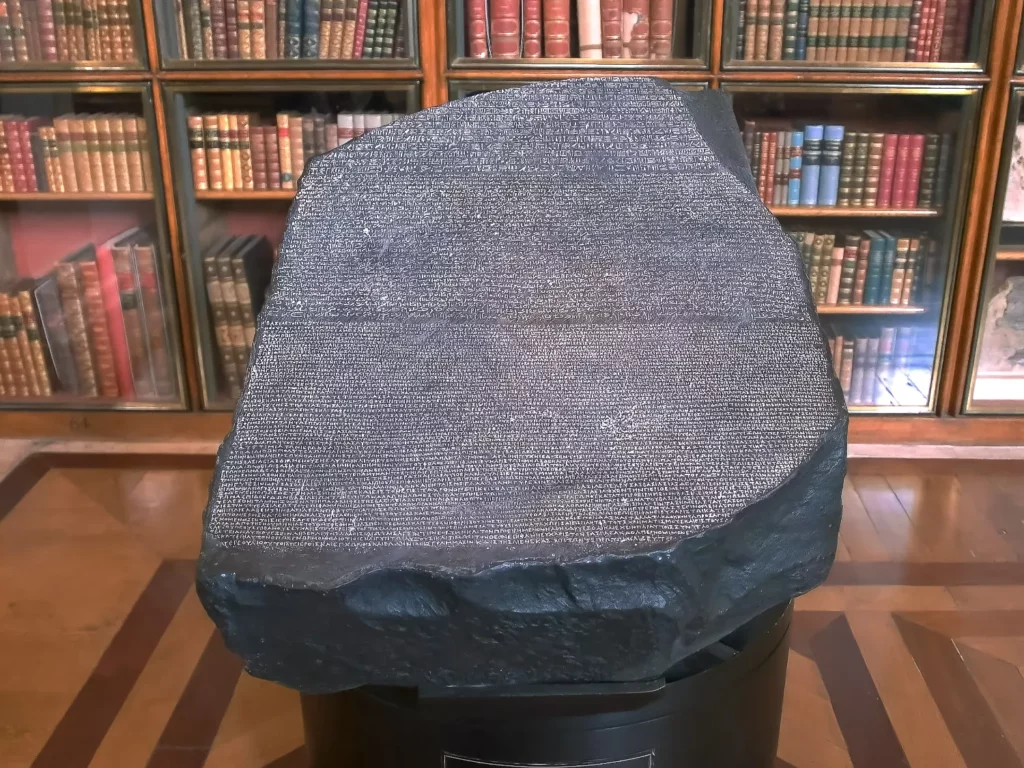
The Enchanting Luxor Temple Sound and Light Show
Immerse yourself in the magic of Luxor Temple after dark as the enchanting Sound and Light Show transports you on a captivating journey through the rich history of this ancient marvel. After sunset, the temple is illuminated in a mesmerising range of colours, allowing for the stories of pharaohs, gods, and legends to come to life in a dramatic spectacle that will surely leave you speechless.
The show’s expertly crafted combination of evocative music, engaging narration, and stunning visual effects creates an unforgettable experience that will enhance your appreciation of this iconic site. This unforgettable night-time extravaganza is a must-see attraction for anyone visiting Luxor, offering a rare opportunity to experience the temple’s magnificence in an entirely new light.
The Best Time to Visit Luxor Temple – Luxor – Egypt
To make the most of your Luxor Temple visit, planning and taking advantage of local knowledge is essential. The perfect time to visit Luxor is during the cooler months, from October to April, when temperatures are more comfortable for exploring the temple complex.
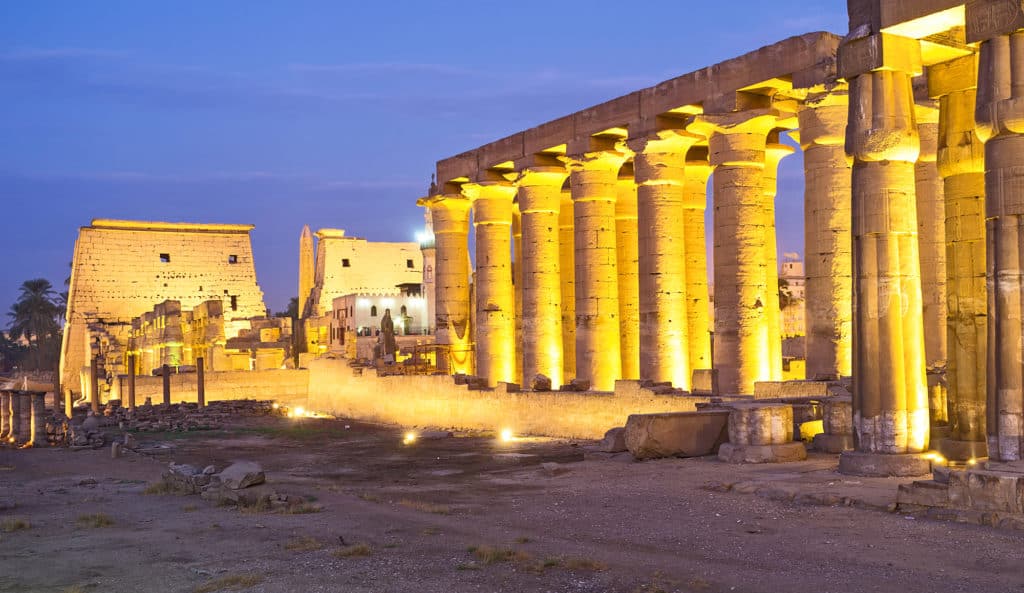
Early mornings or late afternoons are ideal times to avoid the crowds and the heat while also experiencing the temple in the soft, golden light. Guided tours offer an ideal way to better understand the temple’s history, architecture, and significance.
Knowledgeable local guides can share fascinating insights and stories that you will not discover on your own, bringing the ancient world to life before your eyes.
It’s also worth considering a guided tour that includes a visit to Karnak Temple and the Valley of the Kings for a comprehensive exploration of the Theban Necropolis.
As a traveller embarking on your journey through Luxor Temple, you will not only marvel at the architectural splendour of ancient Egypt but also gain a profound appreciation for the diverse cultural heritage that has left its indelible mark on this iconic site. This unique blend of historical influences makes Luxor Temple an unforgettable destination for those seeking to immerse themselves in the enchanting stories of the past.






